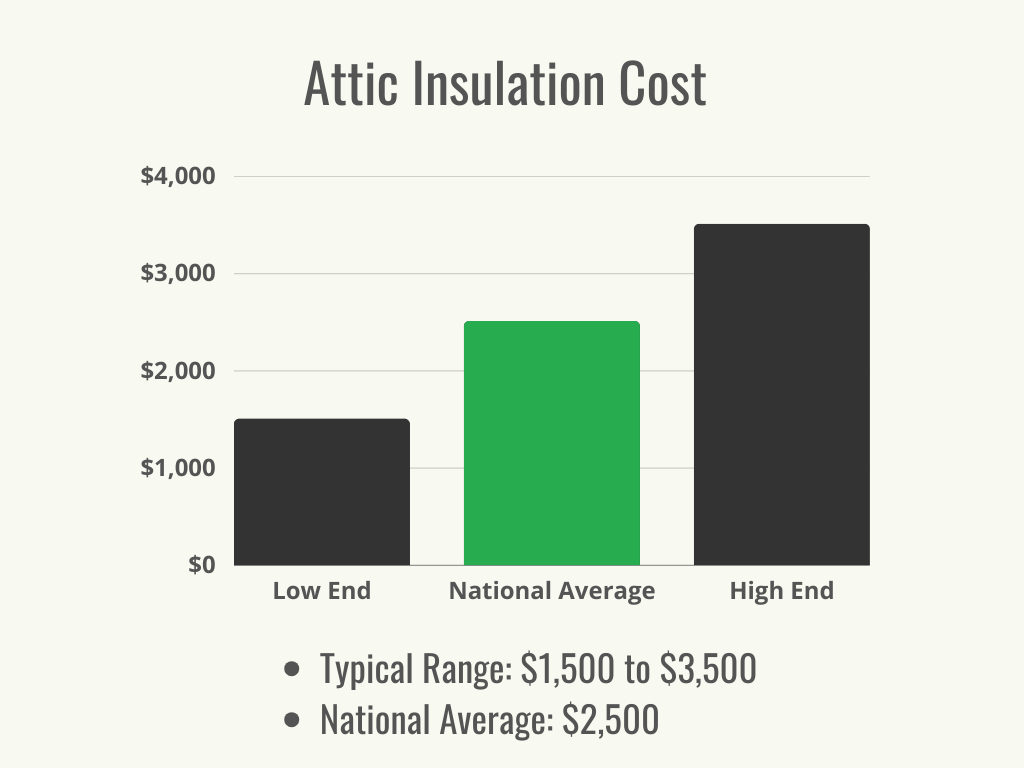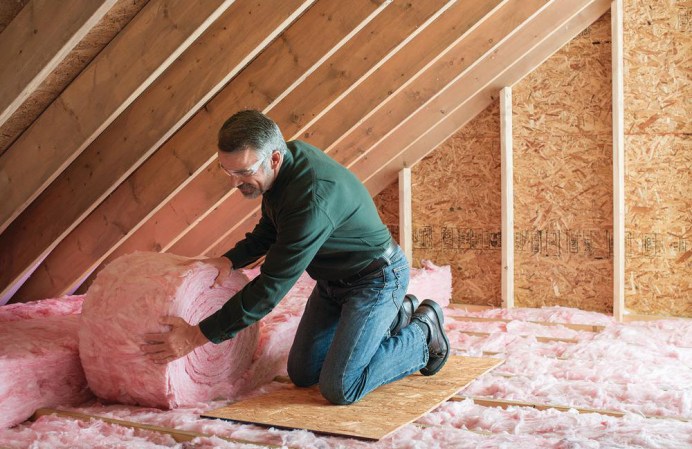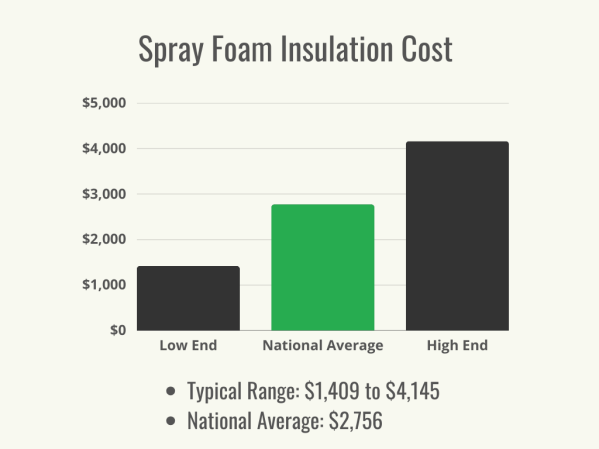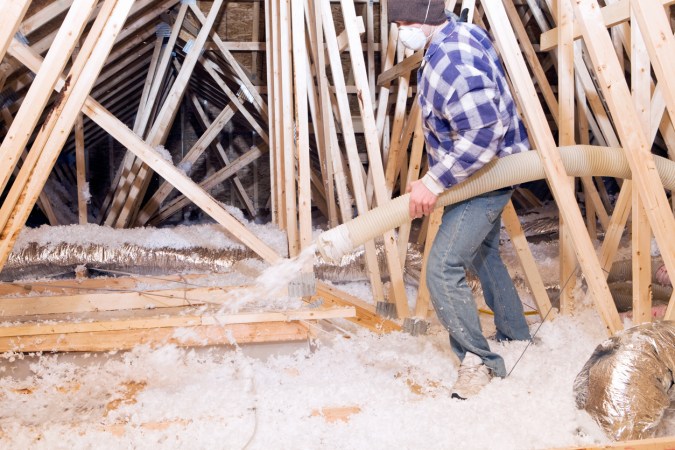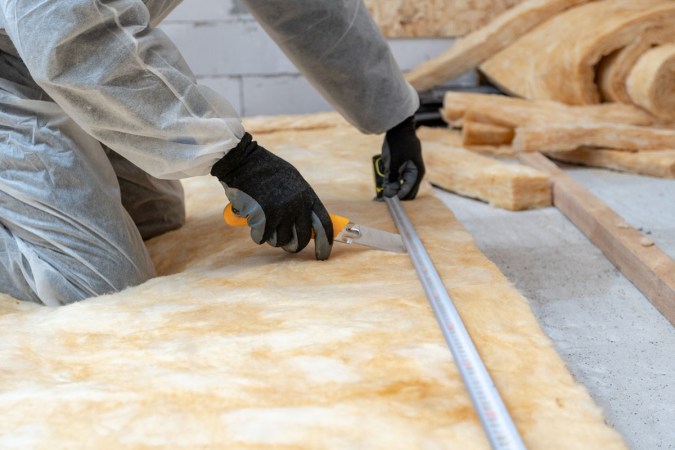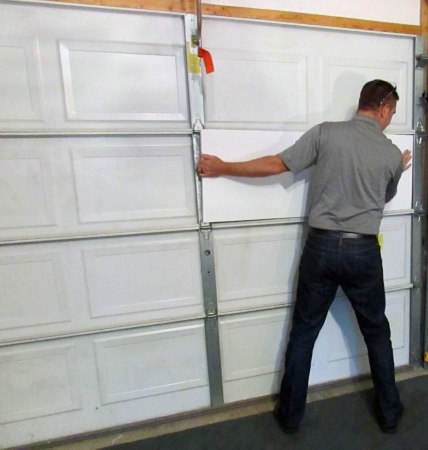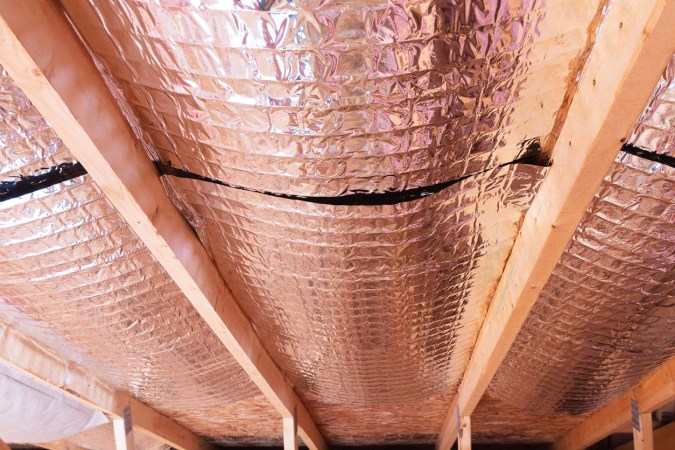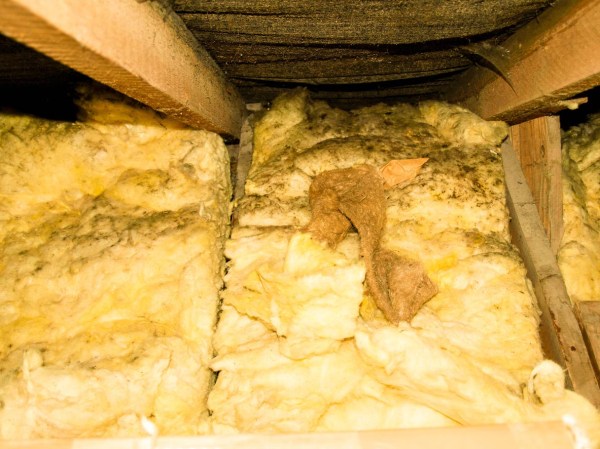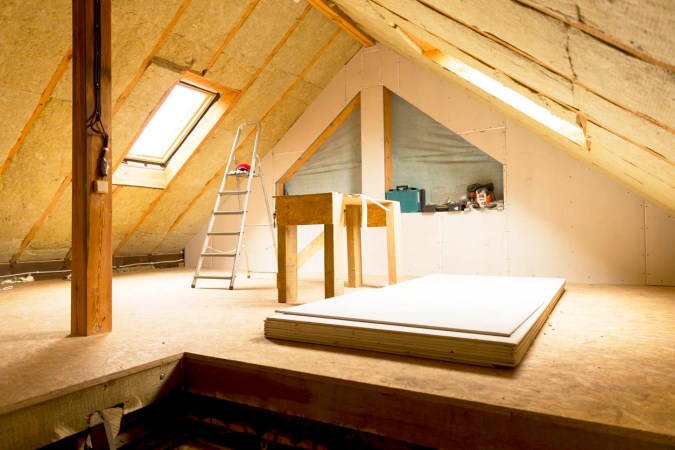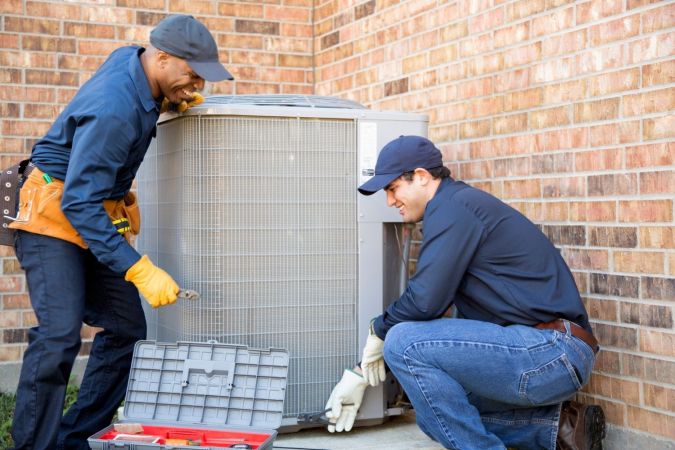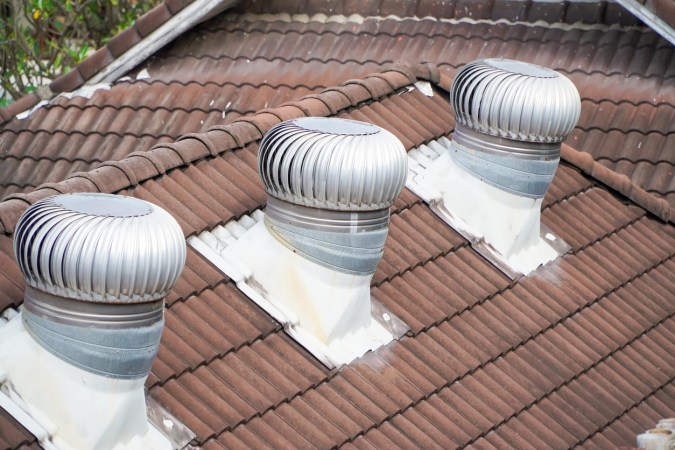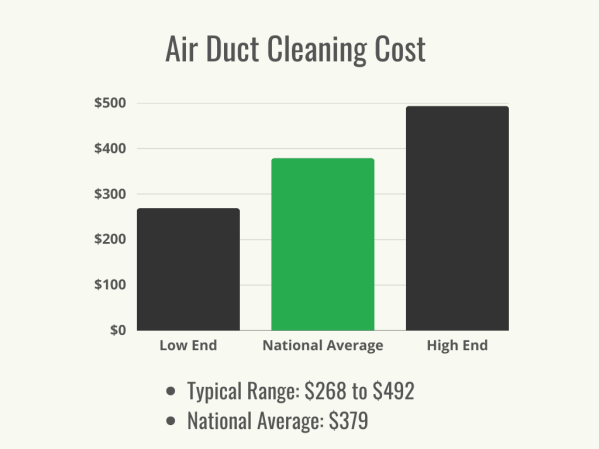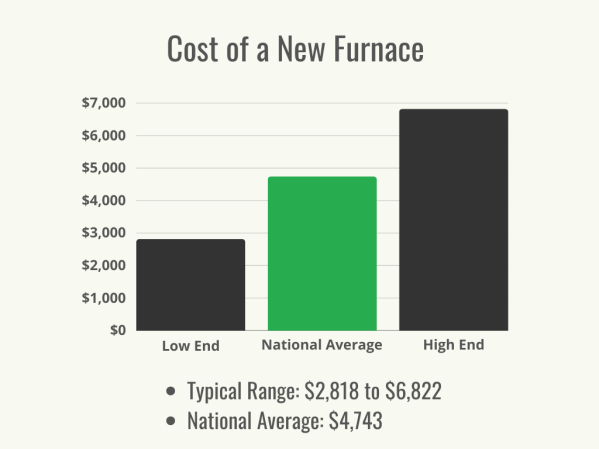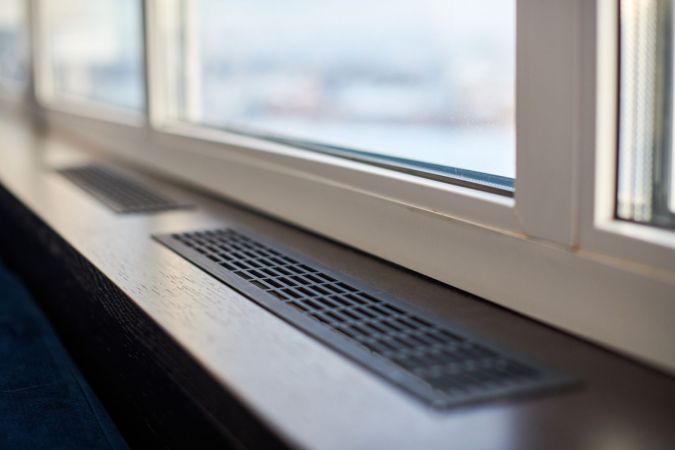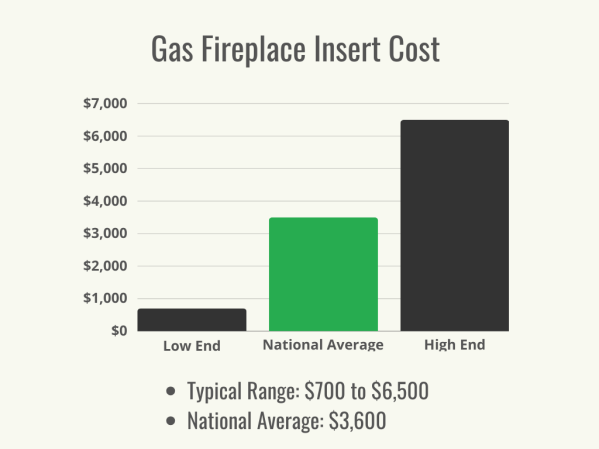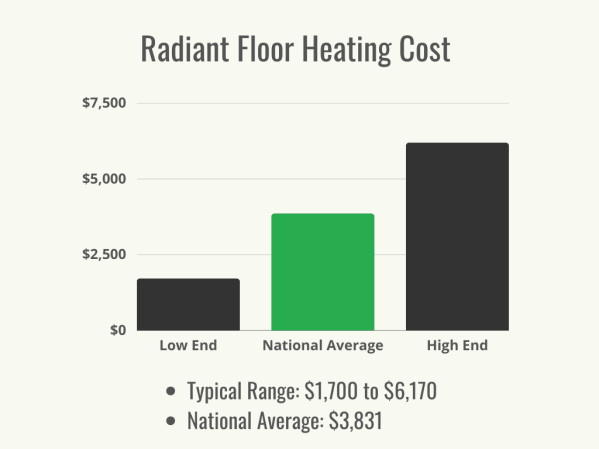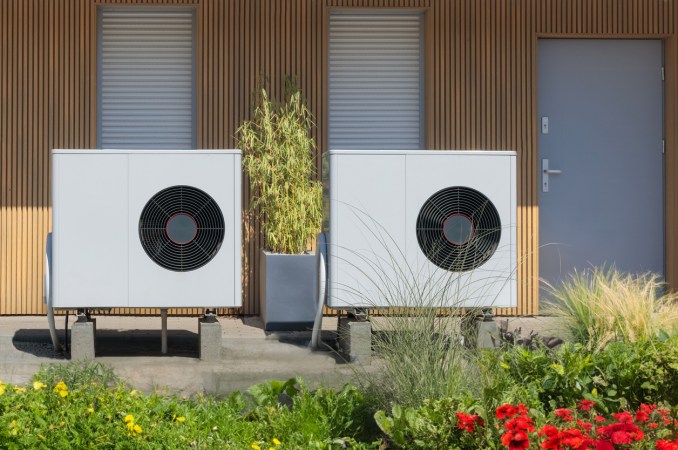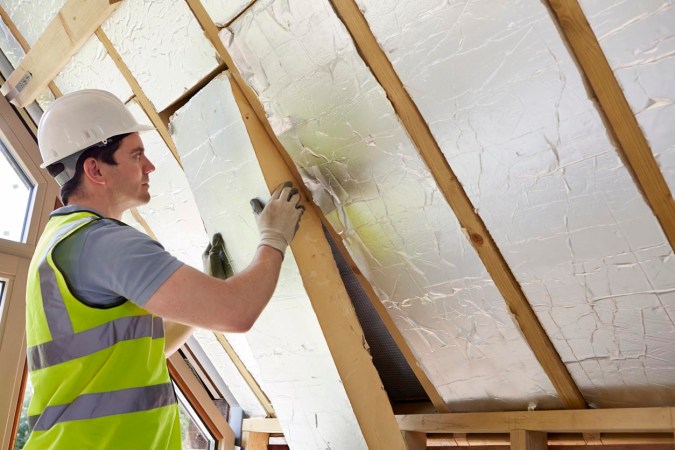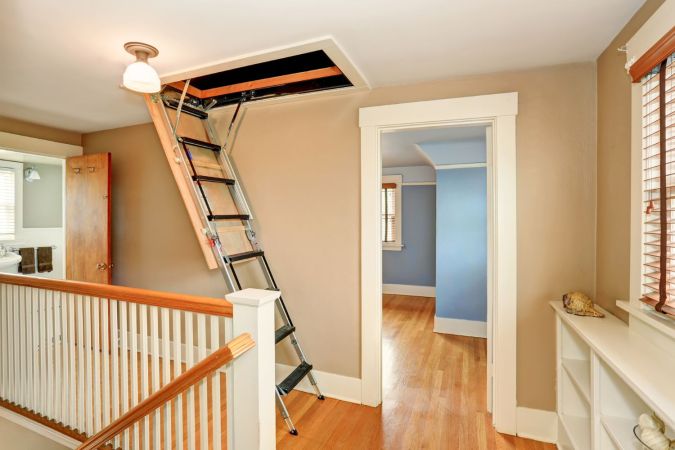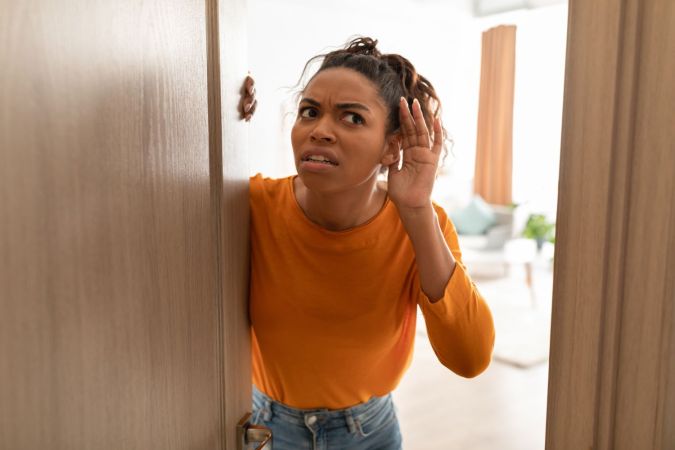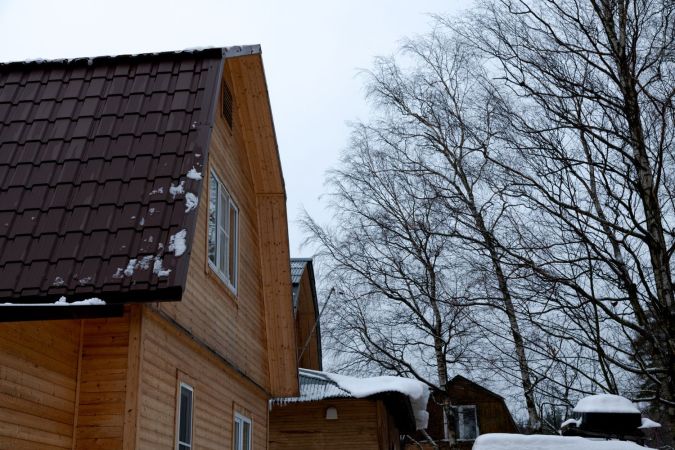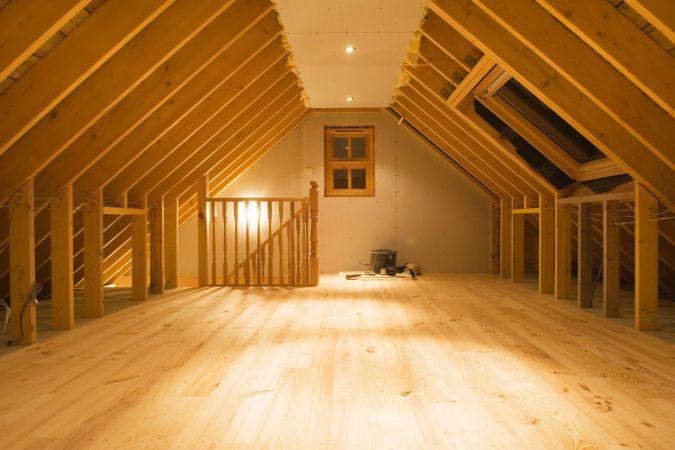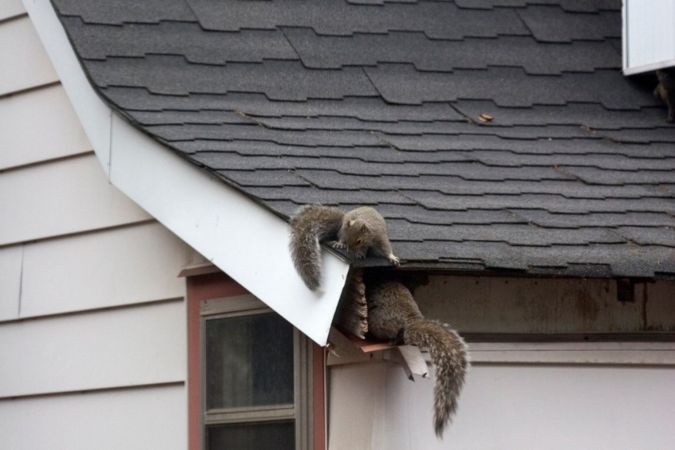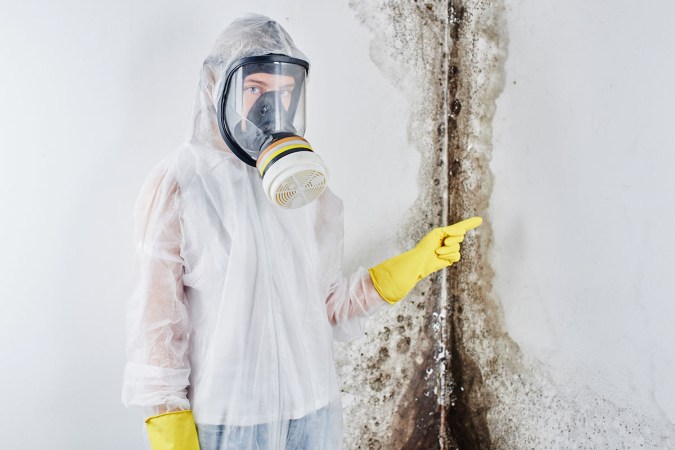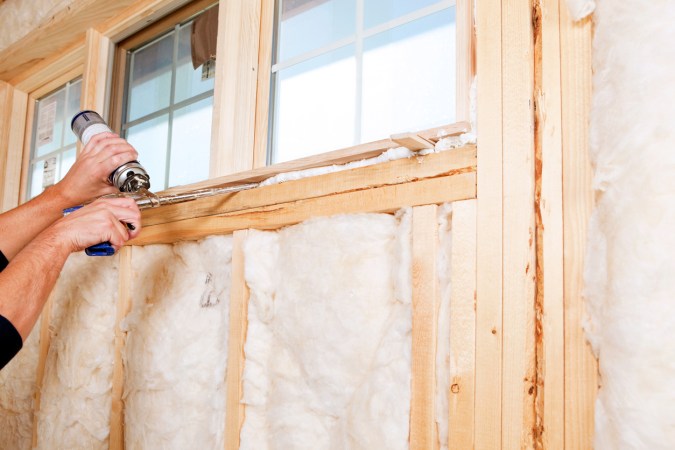We may earn revenue from the products available on this page and participate in affiliate programs. Learn More ›
Highlights
- The typical cost of attic insulation is between $1,500 and $3,500, with a national average of $2,500.
- Cost factors for attic insulation installation include attic size, insulation type, insulation amount, insulation material, R-value, and labor.
- Increased utility bills, icicles on the roof, uneven temperatures, drafts, and worn attic insulation are some of the signs that a home is in need of new attic insulation.
- While some kinds of attic insulation can be installed as a DIY project, a professional will typically be able to deliver the best results.
Local building codes require builders to install a minimum amount of insulation in new homes and during remodeling projects, but many older homes are underinsulated. Inadequate attic insulation leads to higher than necessary heating and cooling bills and can negatively impact a home’s sales appeal. According to Angi and HomeAdvisor, homeowners can expect to pay anywhere from $1,500 to $3,500, with a national average cost of $2,500. Attic insulation costs vary depending on the size of the attic, the ease of access, and the amount of insulation required.
Factors in Calculating Attic Insulation Cost
How much does attic insulation cost? While $2,500 is the average cost to add insulation to an attic, the final price will vary depending on several factors, including the type of insulation and the going rate of labor. Still, in the long run, adding insulation to an existing attic improves not only the comfort level of the residents but also reduces utility costs. An insulating contractor will consider several main factors when estimating the cost of insulating an attic.
Attic Size
The size of the attic is one of the most significant factors in determining how much insulation installation will cost. The larger the attic, the more time and materials will be required to insulate it. Insulation costs per square foot typically fall between $1 and $7. Therefore, a small attic that is only 500 square feet will cost between $500 and $3,500 to insulate. By contrast, large attics that are 1,500 square feet can cost as much as $10,500 to insulate.
| Attic Size in Square Feet | Insulation Cost (Materials and Labor) |
| 500 | $500 to $3,500 |
| 700 | $700 to $4,900 |
| 1,000 | $1,000 to $7,000 |
| 1,500 | $1,500 to $10,500 |
Insulation Type
There are several different types of attic insulation, and the one that is used will significantly affect the overall cost of the project. The most common type of insulation—fiberglass batts—will run an average of $2 to $4 per square foot to install. In comparison, blown-in insulation costs $1 to $4 per square foot to have professionally installed. If comparing blown-in vs. sprayed insulation, homeowners will notice that spray foam insulation is pricier, running an average of $2 to $5 per square foot.
In addition to different types of insulation varying in cost, if the attic is being converted to a living space, not all types of insulation are suitable. An empty attic will need to be insulated between its floor joists, and blown-in, batt, or spray foam insulation can be used. Additionally, one of the costs to finish an attic to convert it to a bedroom is insulation installation in the overhead rafter spaces. In this area, it’s common to use structural insulated panels at the cost of $4 to $7 per square foot or batt insulation.
Insulation Amount
The cost of attic insulation will greatly depend on how much insulation is needed. If the attic already has some insulation—and it’s in good shape—the installer can simply add more (either batts, blown-in insulation, or drop fill) and bring the amount of insulation up to code. If the attic has little or no insulation or the existing insulation is damaged and must be removed, the installer will have to add significantly more new insulation, which will result in a higher cost.
Insulation Material
Not all insulation types are made of the same material. The most common materials for insulation are cellulose, cork, fiberglass, polystyrene, mineral wool, and sheep wool. Some materials like sheep wool come in the form of batting, whereas others like fiberglass can be blown in. Cork is generally the most expensive insulation material, and fiberglass and cellulose have the lowest cost.
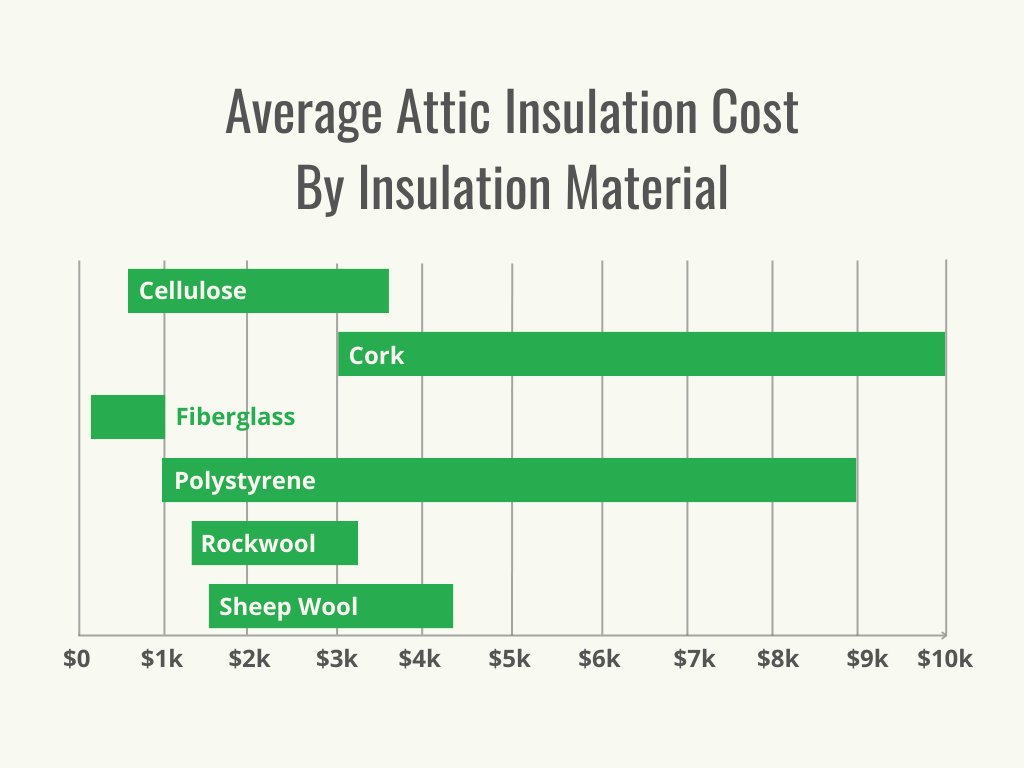
R-Value
The extent to which insulation blocks heat transfer is known as its thermal reduction value or R-value. In colder climates, building codes require attic insulation to have a higher R-value than in warmer climates. R-value is determined by insulation type and thickness. For example, cellulose insulation has an R-value of approximately 3.2 per inch, while the R-value for fiberglass is about 2.5 per inch. If local codes require a minimum of R-30 insulation in the attic, the homeowner would need to install 9.4 inches of blown-in cellulose or 12 inches of fiberglass batt insulation.
Labor
The labor costs to install attic insulation vary from community to community and are also dependent on the type of insulation being installed. Contractors who install spray foam insulation are required to undergo special training and certification to install it, and the labor to install this type can run as much as $800, not counting the cost of the foam product. Homeowners will want to consider whether spray foam insulation is worth it when compared with other options. In general, homeowners can expect to pay anywhere from $1.50 to $3 per square foot just for the labor of an insulation professional.
Additional Costs and Considerations
Insulating an attic is a relatively straightforward home improvement project, and finding a suitable contractor is usually not difficult since many general construction and remodeling companies offer insulating services. However, homeowners may need extra services to get the attic ready or address existing problems that must be repaired before insulation can be installed. The need for these services will add to the overall cost.
Attic Cleaning and Preparation
The cost to clean an attic and prep it for insulation ranges from about $100 to $300. This includes basic cleanup, such as vacuuming sawdust or other construction materials the original builder may have left behind. In an attic where items are stored, it will cost more to have those items removed before installing insulation.
New vs. Replacement Installation
The cost to remove and replace attic insulation is different from the cost to install insulation for the first time. Attic insulation removal costs are typically an additional $1 to $1.50 per square foot. If the installer suggests removing the existing insulation before adding new insulation, the entire project—both the removal and the attic insulation replacement cost—will run about $2 to $8.50 per square foot.
Faced vs. Unfaced Insulation
“Faced” and “unfaced” are terms used to describe the structure of the insulation material. Insulation that is faced is held together with a kind of backing made from vinyl, paper, or foil and typically costs about $500 to $7,500 installed. Foam board and batts are the most common kinds of faced insulation. Loose fill and spray foam insulation fall into the unfaced category and typically cost between $1,750 and $12,000 to install.
Attic Inspection
Attic inspections may be required prior to insulation installation, and these typically cost between $100 and $300. Some insulation companies offer the inspection for free or include this service as part of the installation cost. Ultimately, inspection costs can depend on a few factors including the size of the attic, accessibility, and geographic location.
Energy Audit
Energy audits may not be required, but they can help provide valuable information about where energy is being lost in the attic currently. This can help determine the location and amount of new insulation that needs to be installed. Homeowners can expect to pay $145 to $420 for an attic energy audit.
Whole-Home Insulation
It may be worth replacing insulation in the rest of the home at the same time as replacing the insulation in the attic. Not only is all of the home’s insulation likely to be the same age and therefore due for replacement, but scheduling these projects at the same time can help homeowners save on installation costs. On average, the cost to insulate an entire home is between $2,130 and $6,700.
Roof Vent Installation
Roof vents can help to regulate the airflow in an attic and further regulate temperatures, increasing energy efficiency. They can also assist with preventing moisture buildup. If new roof vents need to be installed, this will need to be done prior to the insulation and will cost about $200 to $700 per vent.
Roof-Leak Repairs
If the initial attic inspection reveals that the roof is leaking, these repairs will need to be done before the insulation can be installed. Leaking roof repairs can cost anywhere from $500 to $1,200. If leaking has gone unaddressed for a significant period, there may be additional costs for mold remediation or water damage repairs.
Air Sealing
Air sealing can help insulation contractors identify where air leaks are happening and seal them before replacing the insulation. This can greatly increase the effectiveness of the insulation and prevent energy loss. Air sealing costs about $250 to $750.
Soundproofing
While installing insulation already provides some soundproofing effects, additional materials can be added to further absorb sound. Installing soundproofing materials can cost $1,000 to $2,500 per room.
Mold, Pest, or Asbestos Inspection and Removal
Reasons for removing existing insulation include water damage, mold, insect or rodent infestation, or the presence of asbestos insulation. If the home was constructed before the 1980s, there’s a chance the insulation in the attic contains asbestos. The look of asbestos insulation can vary, so its presence will need to be confirmed by a professional. Depending on state or municipal laws, an asbestos mitigation professional may be required to test and remove the old insulation, which will add to the cost. If mold removal is needed, it can add $1,500 to $3,500 to the price. Pest inspections are also recommended, as insects or small animals commonly nest in old insulation. Having larger animals like a raccoon in the attic will require the help of a wildlife removal specialist from a company like Critter Control.
| Attic Hazard | Average Cost |
| Asbestos | $250 to $750 for testing; $20 to $65 per square foot for removal |
| Mold | $1,500 to $3,500 |
| Pests | $40 to $150 for inspection |
Humidity Repairs
Excess humidity that goes unaddressed can lead to mold growth, pest activity, and moisture damage. It’s important to have humidity issues dealt with before new insulation is installed. The most common solution for attics is to install a dehumidifier, which costs about $100 to $1,000.
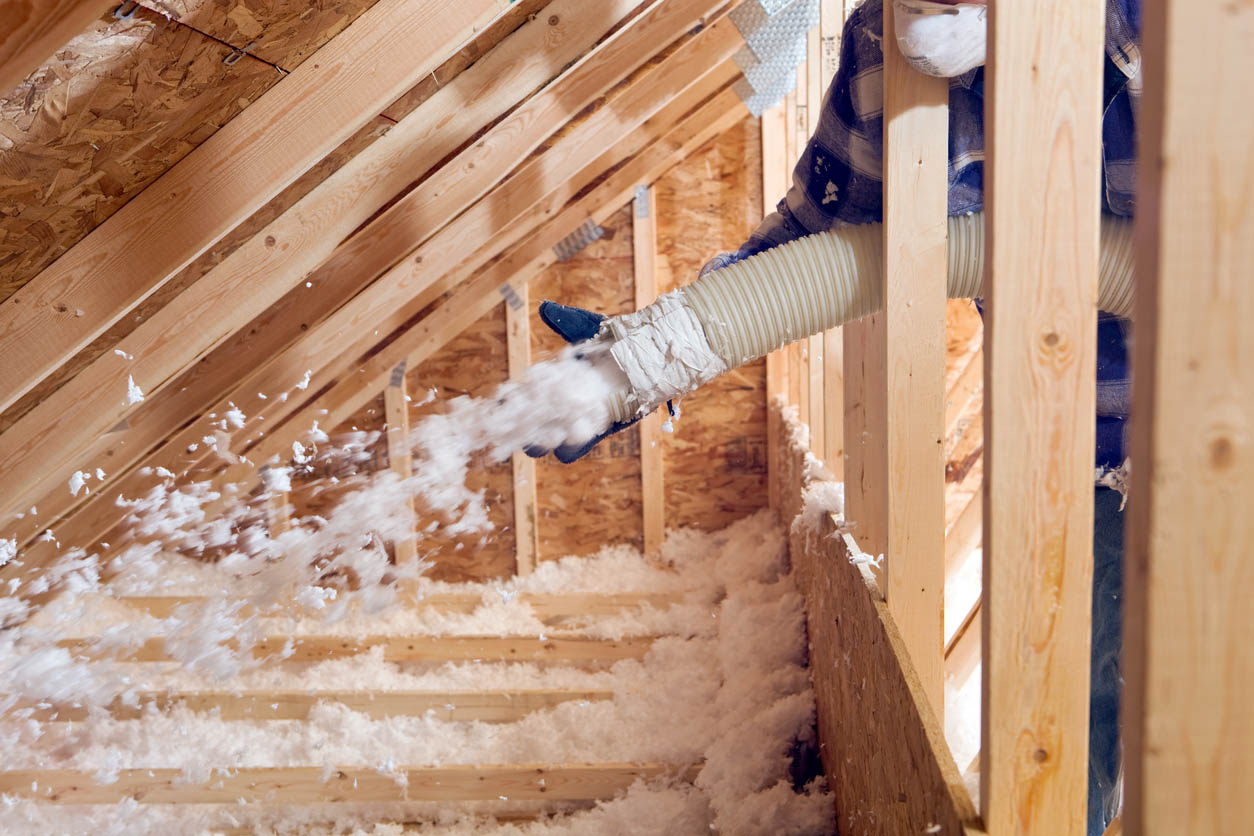
Attic Insulation Cost by Type of Insulation
Not all types of insulation are suitable for all attic situations, and different types can significantly affect the project’s final cost.
| Insulation Type | Average Cost per Square Foot (Materials and Labor) |
| Batt | $2 to $4 |
| Blown-in | $1 to $4 |
| Loose fill | $2 to $5 |
| Reflective | $0.50 to $1.50 |
| Spray foam | $2 to $5 |
| Structural insulation panels | $4 to $7 |
Batt
The most common type of insulation, batt, is made from various materials, but many contain fiberglass, which is resistant to mold, water damage, and insect infestation. The cost of the batts themselves varies depending on thickness, and having them installed runs about $2 to $4 per square foot.
Blown-In
Blown-in insulation is among the least expensive methods, and installing it involves using a blower that distributes shredded paper, cellulose, or rock wool fibers in a uniform layer between the attic’s floor joists or over existing blown-in or batt insulation. Blown-in attic insulation costs $1 to $4 per square foot to have installed.
Loose Fill
This is the same product used in blowers, but it’s a more straightforward process to drop the product by hand in some situations. If it isn’t possible to bring a blowing machine near enough to the attic for a hose to reach, dropping in the product is the next best thing. However, it requires a bit more hands-on work and runs slightly more than the blown-in insulation cost. Homeowners can expect to pay $2 to $5 per square foot for loose-fill installation.
Reflective
In some cases, the addition of a reflective radiant barrier can help reduce thermal transfer. Reflective insulation, sometimes called foil insulation, is simply a shiny sheet that often comes preinstalled on batts or rigid foam panels. It’s also available as just the sheet itself to be installed over other types of insulation. Reflective insulation is more common in hot climates than it is in cooler regions. Adding it to the project runs an average of $0.50 to $1.50 per square foot.
Spray Foam
Attic spray foam insulation—not the stuff that comes in aerosol cans—is pricey because it requires training to apply the foam that comes out of the sprayer as a liquid but quickly expands to fill joist and rafter cavities. Most spray foam insulation companies have their own certified installers, and the cost to install spray foam insulation ranges from $2 to $5 per square foot. It’s worth homeowners noting that when comparing spray foam insulation costs vs. fiberglass and other types of insulation, spray foam has one of the highest environmental costs.
Structural Insulated Panels
Structural insulated panels feature a layer of rigid foam sandwiched between two layers of plywood or oriented strand board (OSB). They’re less commonly used to insulate an attic, but they may be suitable for installation on an existing roof deck or beneath roof rafters if the homeowners want to finish a living space in the attic. The cost to have the panels installed ranges from about $4 to $7 per square foot.
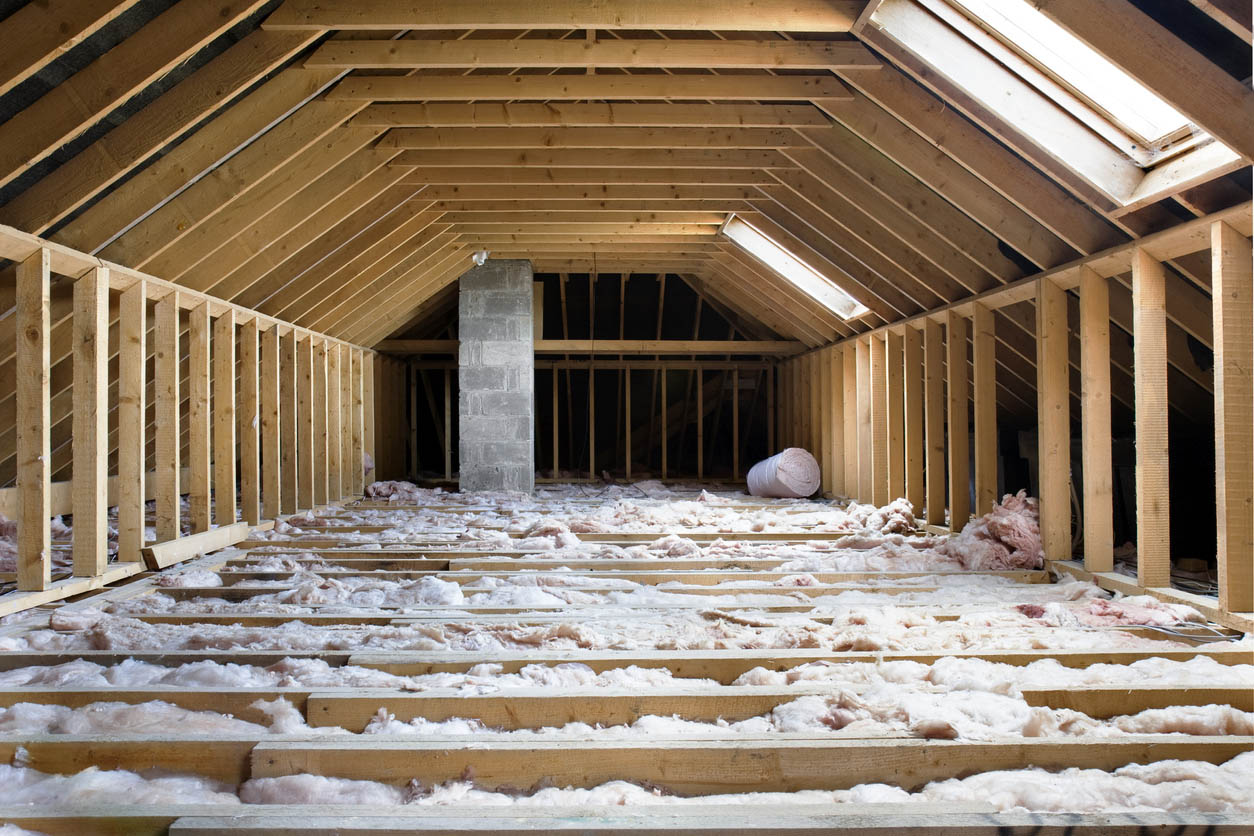
Do I need attic insulation?
One of the simplest ways to determine whether an attic could benefit from added insulation is to look at the existing insulation. If the insulation does not reach the top of the floor joist, it’s probably not enough to keep the house (and its residents) comfortably warm or cool. In addition, a few other signs indicate a need for additional (or corrective) insulation in the attic.
Increased Utility Bills
The cost to heat and cool a home is higher than ever, and there’s no indication that it will come down anytime soon. The Office of Energy Efficiency and Renewable Energy suggests that homeowners can save up to 20 percent on their energy usage by upgrading their home’s insulation. If the house currently has little or no insulation, the energy cost savings could be even higher.
Icicles on the Roof
The formation of icicles on a roof could be an indication of incorrect roof insulation in the attic. Blown-in insulation might be blocking the attic’s intake vents that are located in the soffits or eaves. This can result in heat building up beneath the roof deck, which causes snow to melt during the day and then refreeze at night, forming icicles. It typically costs between $1 and $1.50 per square foot for attic insulation removal, not including the cost of replacing the old insulation. The final price depends on the size of the attic and the extent of the problem. If it’s not corrected, however, the issue can reduce the roof’s useful life.
Uneven Temperatures
Inadequate attic insulation can cause some rooms to be warmer than others. This is often the result of uneven distribution of insulation in the attic. Alternatively, the insulation in certain areas may have become damaged by water or torn out by rodents. An insulating company might solve the problem by blowing in additional insulation, which runs between $1 and $4 per square foot.
Drafts
Along with too little insulation in the attic, if gaps are not sealed between the attic and the living space below, the residents may experience uncomfortable drafts. As a part of a comprehensive attic insulation project, it’s a good idea to have the attic sealed simultaneously. Air sealing can add $250 to $750 to the final tally, eliminating attic drafts and significantly increasing comfort.
Worn Attic Insulation
Insulation depends on its loft (fluffiness) to provide the highest R-value, but over time, insulation can become compacted, and then it fails to give the R-value it once did. As long as it isn’t moldy and doesn’t contain asbestos, the best course of action is to install new insulation over the old insulation. The cost will depend on the amount necessary to bring the insulation up to the desired R-value.
Benefits of Installing Attic Insulation
Heat rises, so homes with under-insulated attics will lose more desirable heat in the winter. In summer, in warm regions, attics can become unbearably hot, and the heat can be absorbed by the materials in the attic floor and transferred to the living space below. Adding insulation is often the first (and best) option for reducing thermal transfer.
Lower Utility Bills
When heat from the furnace escapes through a poorly insulated attic, the furnace will cycle on more frequently to keep the living space comfortably warm. With rising electricity and gas costs, having an under-insulated attic can result in outrageous utility bills. Insulating attic spaces reduces utility bills and contributes toward a smaller carbon footprint.
Better Air Quality and Comfort Level
Insulation improves indoor comfort levels by reducing thermal transfer, but that’s not all it does. In homes with moldy or asbestos insulation, the air quality in the home can suffer. The healthiest solution is to have the old insulation removed and new insulation installed. The cost to replace attic insulation ranges widely from around $2 per square foot up to as much as $8.50 per square foot, with the most significant cost factor being whether professional mold or asbestos mitigation services are necessary.
Safer Home
Attic insulation that covers recessed can lights or is too close to a chimney can start a fire in the attic. In addition, insulation that covers the attic’s intake vents will prevent fresh air from circulating through the attic, which can cause heat and humidity to build up and damage the roof deck and shingles. A quick professional inspection can determine whether the existing insulation poses a danger. Homeowners can expect to pay between $2 and $8.50 per square foot to remove and replace the insulation if a problem exists.
HVAC Longevity
The home’s heating, ventilation, and air conditioning system is a big-ticket item, and the more it has to cycle on to heat or cool the home, the sooner it will reach the end of its useful life. An HVAC unit will run less often in a well-insulated home because the indoor temperature remains more constant. Attic insulation cost runs $1,500 to $3,500, with a national average of around $2,500.
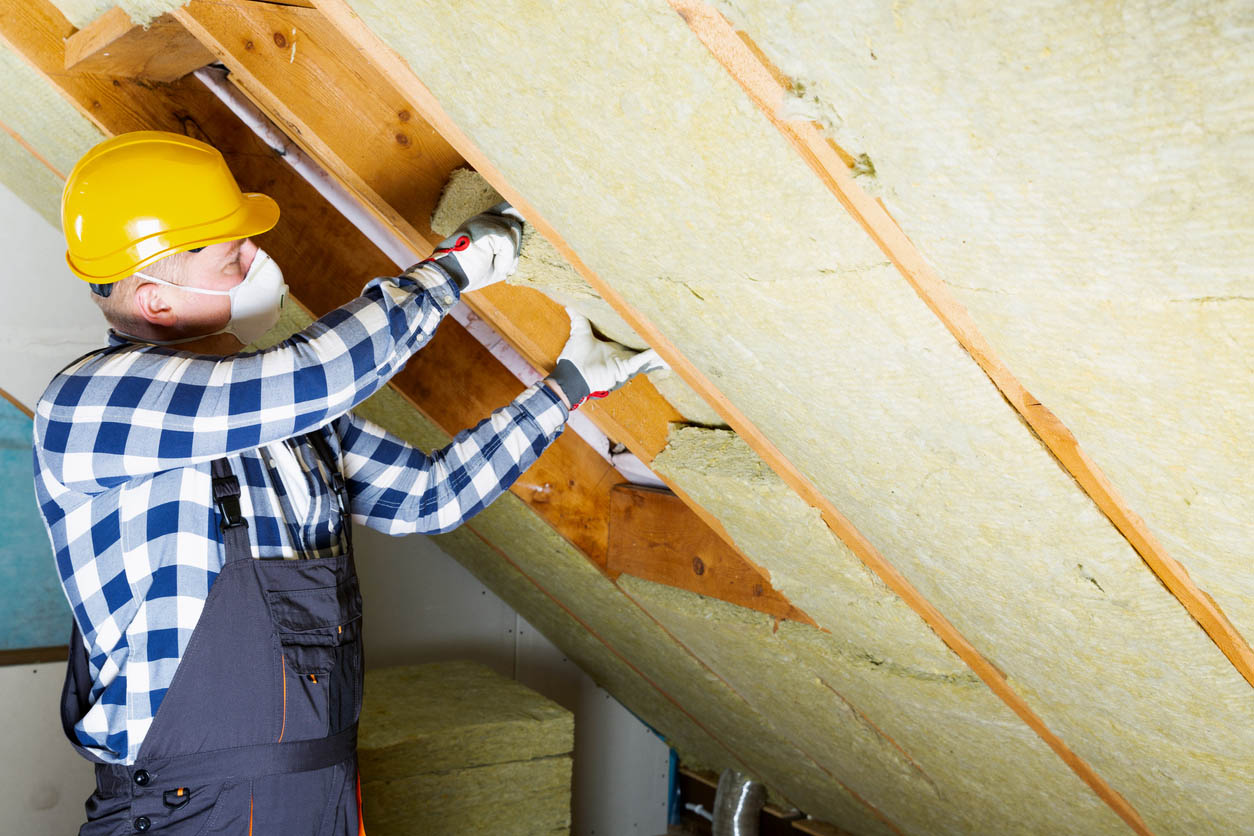
Attic Insulation: DIY vs. Hiring a Professional
Installing insulation in an attic is more DIY-friendly than a lot of home renovation and updating projects, but it can be a messy job and, in some cases, dangerous. Home improvement centers sell large bags of both batt and blown-in insulation, and they rent insulation blowers, too. Insulating an attic as a DIY project rather than hiring a pro will save on labor to the tune of between $1.50 to $3 per square foot, but homeowners will also need to know how to block out the attic’s intake vents to keep from covering them up, as this can lead to roof damage.
It can also be dangerous to do DIY attic insulation. Walking on the edges of attic joists is a recipe for breaking through the drywall ceiling below after a wrong step, so it’s important for homeowners to use plywood sheets to walk on and keep moving them throughout the process.
Homeowners who are up to the task and know how to insulate an attic might want to DIY it, but it’s much simpler—and less messy—to hire one of the best insulation contractors (such as Dr. Energy Saver) to do the work. Plus, an expert is more likely to spot hazards, such as the presence of asbestos or mold. Homeowners who aren’t sure how to hire an insulation installer can look online for “attic insulation companies near me” to find a reputable local pro.
How to Save Money on Attic Insulation Cost
In the long run, having the attic insulated often saves money on utility bills, and it goes a long way toward making an interior living space more comfortable. That said, it’s still a pricey prospect for many, ranging from $1,500 to $3,500, with a national average of about $2,500, so it’s only natural to want to save a little money when hiring a pro. Here are some ways to save.
- Purchase the material yourself. An insulation contractor will supply the needed materials, but you may be charged a contractor’s fee equal to a certain percentage of the material cost.
- Measure twice. Ensure that you know exactly how much material is needed for your attic size to avoid overbuying.
- Clean the attic. If the contractor has to remove storage boxes, debris, or other items, you’ll be charged for the service.
- Do your own air sealing. Gaps between the attic and the living space below should be sealed before adding insulation. By doing this step yourself, you can save $250 to $750.
- Opt for less expensive insulation. It can cost $2 to $5 per square foot to have spray foam insulation installed, but it costs just $1 to $4 per square foot to have blown-in insulation installed.
- Consider adding to the existing insulation rather than replacing it. Suppose the current insulation is substandard in depth but isn’t damaged by mold or water. In that case, you can probably add more insulation right on top rather than removing and replacing all the insulation.
- Ask about a package deal. Often, when an attic needs insulation, the home’s exterior walls might also benefit from some. The insulating company may offer a price cut for blowing in more wall insulation while they blow in attic insulation.
- Shop around. Getting quotes from several different installers can help you get the best possible price.
- Look into local energy incentives. Depending on your location, there may be financial benefits like rebates for improving your home’s energy efficiency which can help mitigate installation costs.
Questions to Ask About Attic Insulation
Adding insulation to an attic is one of the more straightforward home updating projects, and asking the following questions will provide homeowners with a better understanding of what kind of service will be provided.
- Are you licensed, insured, and bonded?
- How much experience do you have with this kind of project?
- Could I have a bid?
- Could you itemize your bid?
- Do you offer financing?
- Can I be in the house while you are working?
- What kind of insulation do you recommend?
- Is removal of the old insulation included in the quote?
- Do you have a rough timeline for the project?
- What kind of energy savings can I expect once the project is completed?
- Are there any rebates available that you know of? Who applies for these?
- Do you warranty your work?
- How long will this insulation last?
FAQs
Having insulation added to the attic will result in a more comfortable home, lower heating and cooling costs, and if the house goes on the market, it will be considered a plus. Still, it can be costly—averaging $2,500 nationally—so it’s natural for homeowners to have some questions.
Q. What’s the best type of insulation for an attic?
The best insulation for attic spaces ultimately depends on the attic, but adding insulation of any type is beneficial. The most common type of attic insulation is blown-in cellulose or batts made of fiberglass.
Q. How much does it cost to insulate a 1,500-square-foot attic?
It will depend on local codes, the going rate of labor, how easy it is to access the attic, and the type of insulation used. Insulation could cost anywhere from $1,500 to $10,500.
Q. How long does it take to insulate an attic?
For most attics, it will take between 5 hours and 2 days depending on the size of the attic and the type of insulation being installed.
Q. What happens if my attic is not vented?
The attic must be vented. If it’s not, heat can build up beneath the roof deck, loosen the shingles, trigger melt-freeze cycle damage, and shorten the roof’s life.
Q. Can you over-insulate your attic?
Most local building codes require a minimum amount of insulating R-value for attics, depending on climate. Adding a few more inches might help, but more than that is unlikely to result in a return on your investment.
Sources: HomeAdvisor, Angi, Fixr, HomeGuide, LawnStarter

